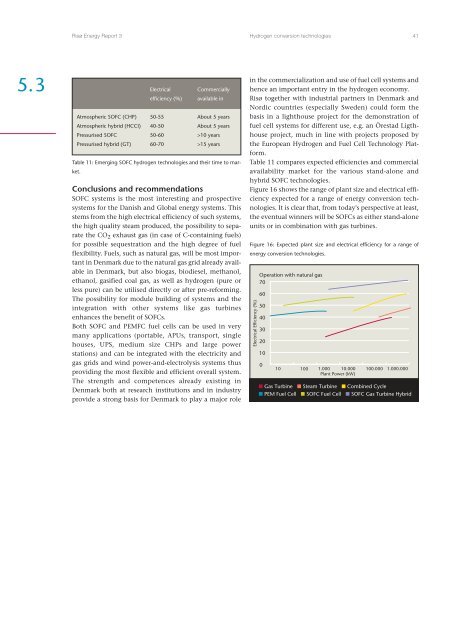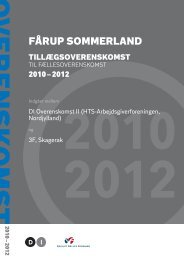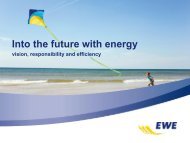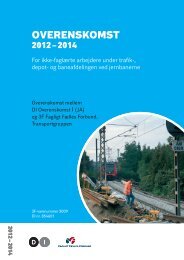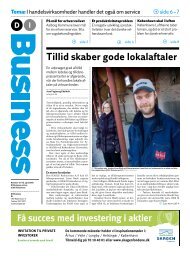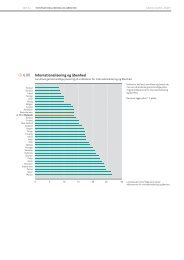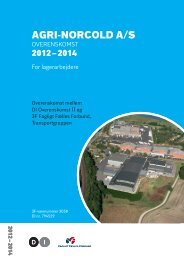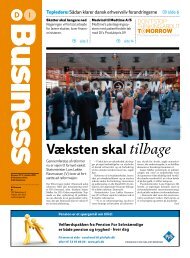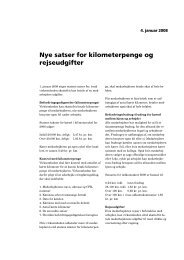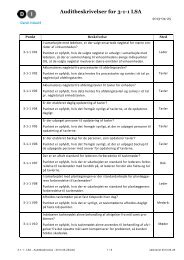40Risø Energy Report 3<strong>Hydrogen</strong> conversion technologies5.3anode compartment of the PEMFC. The PEMFC <strong>its</strong>elf iscooled by water, from which heat is recovered.Off-gas from both the anode <strong>and</strong> the cathode is firstcooled to condense out pure water (boiler feed water,BFW) for re-use. The offgas, which contains unburnedhydrogen, is then burned in the reformer heater.Such a system has an electrical efficiency of 37% <strong>and</strong> atotal efficiency of 82%.Homogeneous charge compression ignitionHomogeneous charge compression ignition (HCCI) is anemerging technology for internal combustion enginesthat can provide high efficiency (up to 43%) usingvarious fuels, including hydrogen. HCCI creates verylittle pollution, with almost no NOx or particulates. Thetechnology is of interest for both transport <strong>and</strong> electricitygeneration, <strong>and</strong> is being followed closely by automotivemanufacturers. The basic advantage of HCCI is tocombine the very low emissions of an SI engine using athree-way catalyst <strong>and</strong> the very high efficiency of a diesel(CI) engine.HCCI combines the characteristics of spark-ignition (SI,or Otto) engines, such as st<strong>and</strong>ard gasoline engines, <strong>and</strong>compression-ignition (CI or diesel) engines. Fuel <strong>and</strong> airare mixed before combustion, as in a conventional SIengine. As in a diesel engine, however, there is no sparkplug, <strong>and</strong> combustion is started by autoignition instead.To ensure that the autoignition temperature is reachedjust as the piston reaches top dead centre, HCCI enginescontrol the inlet temperature, the compression ratio, orboth.Because the fuel/air mixture is close to homogeneouswhen the charge is ignited, there is no differencesbetween local <strong>and</strong> global combustion rates, in contrast tothe situation in a SI or CI engine. This means that toprevent excessive combustion rates, the mixture must bevery lean. A too rich mixture will burn the entire chargein a small fraction of the power stroke, producing veryhigh combustion pressures, high stresses <strong>and</strong> high noiselevels. A too lean mixture produces slow <strong>and</strong> incompletecombustion.Lean burning means that the HCCI engine cannot createparticulates, <strong>and</strong> the low combustion temperature lim<strong>its</strong>thermal NOx to 0.1-2 ppm. On the other h<strong>and</strong>, aproblem with current HCCI engines running on hydrocarbonfuels is higher levels of unburned hydrocarbons<strong>and</strong> carbon monoxide in the exhaust.An HCCI engine running on hydrogen, however, cannotform carbon monoxide or emit unburned hydrocarbons– in fact <strong>its</strong> only exhaust product is steam. Researchers atLund Institute of Technology in Sweden are developinghydrogen-fuelled HCCI engines.The main problem with HCCI is to control the combustionprocess, balancing the inlet conditions to getcombustion at the correct point in the cycle. Changingthe inlet temperature by just a few degrees, for instance,can be enough to stop the engine. This degree of controlcannot be achieved with a direct link between the acceleratorpedal <strong>and</strong> the throttle. Modern electronic enginemanagement systems, however, are capable of theclosed-loop control that HCCI requires.Gas turbines<strong>Hydrogen</strong> as a fuel for gas turbines (GTs) has been investigatedfor several decades. Producing exhaust gasescontaining only water vapour, oxygen, nitrogen <strong>and</strong>some unburned hydrogen, gas turbines running onhydrogen offer the prospect of environment-friendly<strong>and</strong> CO 2 -free electricity generation.Burning hydrogen in gas turbines raises issues including:• high flame speed can cause the flame to move upstream<strong>and</strong> stabilise on the fuel injector, resulting indamage to the burner;• increased risk of flashback in premix mode;• high flame temperatures increase NOx emissions; <strong>and</strong>• hydrogen can cause embrittlement of metal componentsin the fuel system.Hybrid cycles with fuel cells <strong>and</strong> HCCI/GTBecause of their high electrical conversion efficiencies,SOFCs will probably form the basis of the best futureCHP plants. Adding a heat engine such as a HCCI or a gasturbine can improve the operation of a SOFC plant evenfurther.A st<strong>and</strong>-alone atmospheric-pressure SOFC plant uses acatalytic incinerator with waste heat recovery to destroyunburned fuel in the anode exhaust gas. Replacing theincinerator with an HCCI engine improves overall efficiency,increases the proportion of shaft power availablefrom the plant, reduces exhaust gas volumes <strong>and</strong>provides greater flexibility during load following, startup<strong>and</strong> shutdown.Running the SOFC under pressure reduces the volume ofthe fuel cell stack <strong>and</strong> improves performance by allowingthe electrochemical reactions to operate more effectively.If we use a gas turbine instead of an HCCI engine toreplace the incinerator, there is the further advantagethat compressed air from the gas turbine's compressorcan be used to supply the SOFC.Calculations show that small hybrid SOFC/GT plants ofaround 350 kW e could achieve electrical efficiencies of60-70%, which is considerably better than competingtechnologies of this size. Burning hydrogen instead ofnatural gas would further increase the efficiency by a fewpercentage points.Disadvantages of hybrid systems include:• the need to develop new gas turbines specifically forSOFC/GT hybrid systems. Off-the-shelf GTs would notbe suitable;• lack of operating flexibility, especially at part load,because of the strong interdependency between theSOFC <strong>and</strong> the GT; <strong>and</strong>• complications during start-up, shutdown <strong>and</strong> loadchange, because of the risk of compressor surge.
Risø Energy Report 3<strong>Hydrogen</strong> conversion technologies 415.3Electricalefficiency (%)Commerciallyavailable inAtmospheric SOFC (CHP) 50-55 About 5 yearsAtmospheric hybrid (HCCI) 40-50 About 5 yearsPressurised SOFC 50-60 >10 yearsPressurised hybrid (GT) 60-70 >15 yearsTable 11: Emerging SOFC hydrogen technologies <strong>and</strong> their time to market.Conclusions <strong>and</strong> recommendationsSOFC systems is the most interesting <strong>and</strong> prospectivesystems for the Danish <strong>and</strong> Global energy systems. Thisstems from the high electrical efficiency of such systems,the high quality steam produced, the possibility to separatethe CO 2 exhaust gas (in case of C-containing fuels)for possible sequestration <strong>and</strong> the high degree of fuelflexibility. Fuels, such as natural gas, will be most importantin Denmark due to the natural gas grid already availablein Denmark, but also biogas, biodiesel, methanol,ethanol, gasified coal gas, as well as hydrogen (pure orless pure) can be utilised directly or after pre-reforming.The possibility for module building of systems <strong>and</strong> theintegration with other systems like gas turbinesenhances the benefit of SOFCs.Both SOFC <strong>and</strong> PEMFC fuel cells can be used in verymany applications (portable, APUs, transport, singlehouses, UPS, medium size CHPs <strong>and</strong> large powerstations) <strong>and</strong> can be integrated with the electricity <strong>and</strong>gas grids <strong>and</strong> wind power-<strong>and</strong>-electrolysis systems thusproviding the most flexible <strong>and</strong> efficient overall system.The strength <strong>and</strong> competences already existing inDenmark both at research institutions <strong>and</strong> in industryprovide a strong basis for Denmark to play a major rolein the commercialization <strong>and</strong> use of fuel cell systems <strong>and</strong>hence an important entry in the hydrogen economy.Risø together with industrial partners in Denmark <strong>and</strong>Nordic countries (especially Sweden) could form thebasis in a lighthouse project for the demonstration offuel cell systems for different use, e.g. an Örestad Ligthhouseproject, much in line with projects proposed bythe European <strong>Hydrogen</strong> <strong>and</strong> Fuel Cell Technology Platform.Table 11 compares expected efficiencies <strong>and</strong> commercialavailability market for the various st<strong>and</strong>-alone <strong>and</strong>hybrid SOFC technologies.Figure 16 shows the range of plant size <strong>and</strong> electrical efficiencyexpected for a range of energy conversion technologies.It is clear that, from today's perspective at least,the eventual winners will be SOFCs as either st<strong>and</strong>-aloneun<strong>its</strong> or in combination with gas turbines.Figure 16: Expected plant size <strong>and</strong> electrical efficiency for a range ofenergy conversion technologies.Electrical Efficiency (%)Operation with natural gas706050403020100101001.000 10.000Plant Power (kW)100.0001.000.000■ Gas Turbine ■ Steam Turbine ■ Combined Cycle■ PEM Fuel Cell ■ SOFC Fuel Cell ■ SOFC Gas Turbine Hybrid


